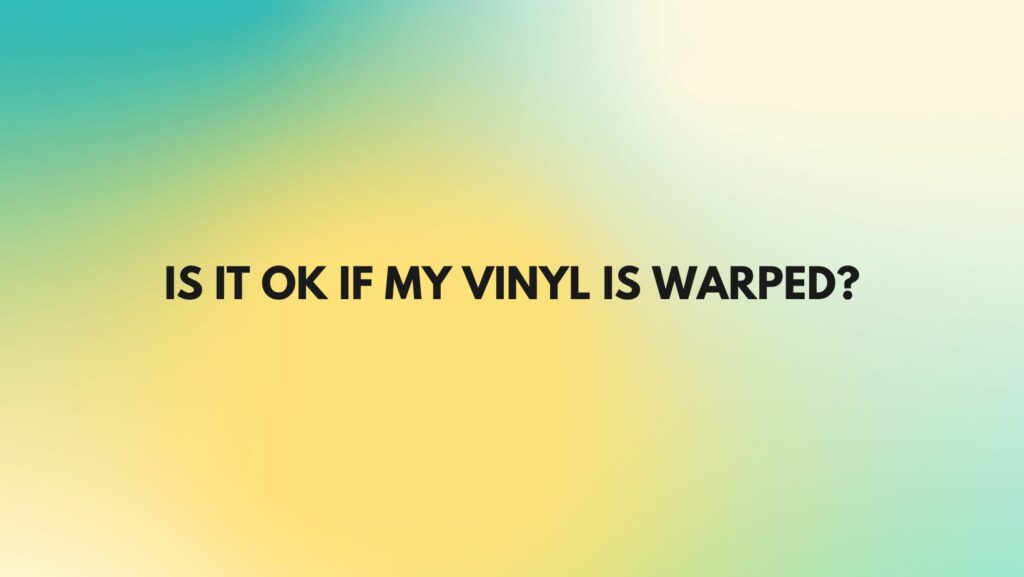Vinyl records, revered for their analog warmth and unique sonic character, occasionally face the challenge of warping. Warping occurs when the vinyl material undergoes physical deformations, causing the record to deviate from its flat, pristine state. In this guide, we’ll explore the nuances of warped vinyl, addressing whether it’s okay to play, the potential consequences, and how enthusiasts can mitigate or manage this common issue.
- Identifying Vinyl Warping:
Warping can manifest in various ways, including visible bends, ripples, or even a noticeable curve in the record. While some warps are subtle and may not affect playback significantly, others can result in skips, jumps, or distortion during playback.
- Causes of Vinyl Warping:
Warping is often a result of exposure to heat, either direct sunlight or elevated room temperatures. Vinyl records left in a hot car, stored near a heat source, or subjected to extreme temperature fluctuations are more prone to warping.
- Degrees of Warping:
Not all warped records are created equal. Some warps are mild and may not impact playback significantly, while severe warps can lead to audible distortion and make the record challenging to play without causing damage to the stylus or turntable.
- Playback on Warped Vinyl:
Mild warps may not pose an immediate threat to playback. However, severe warps can cause the stylus to ride unevenly along the grooves, leading to skips and jumps. Continued playback on severely warped vinyl can damage both the record and the stylus.
- Mitigating Warping:
If you discover a mild warp, there are some potential methods to mitigate it. Placing the warped record between two heavy objects, like flat books, and exposing it to mild heat can sometimes help alleviate mild warps. However, caution is advised, as excessive heat or pressure can worsen the situation.
- Professional Restoration Services:
For valuable or sentimental records with significant warping, professional restoration services may be a viable option. Experts can apply controlled heat and pressure to reshape the vinyl, restoring it as closely as possible to its original state.
- Preventing Warping:
Prevention is key to maintaining the longevity of vinyl records. Proper storage in a cool, dry environment away from direct sunlight, radiators, or other heat sources is crucial. Storing records vertically and using protective inner sleeves can also minimize the risk of warping.
- Accepting Mild Warps:
Mild warps that do not significantly affect playback may be acceptable to some enthusiasts. If the enjoyment of the music remains uncompromised, and the warp does not cause damage to the stylus or turntable, some collectors may choose to live with minor imperfections.
- Knowing When to Retire:
Severely warped records that consistently hinder playback or risk damaging equipment may need to be retired from regular use. Retiring a warped record ensures that the stylus and turntable remain in good condition and that the vinyl collection continues to provide an enjoyable listening experience.
Conclusion:
The presence of warps in vinyl records is a common challenge for enthusiasts, and the impact varies based on the severity of the deformations. While mild warps may be acceptable for some collectors, severe warps can compromise the playback experience and risk damage to equipment. By adopting preventative measures, understanding restoration options, and assessing the impact on playback, enthusiasts can make informed decisions on how to address and manage warped vinyl in their cherished collections. Ultimately, striking a balance between preserving the integrity of the vinyl and enjoying the music is key in navigating the twist in the vinyl journey.

